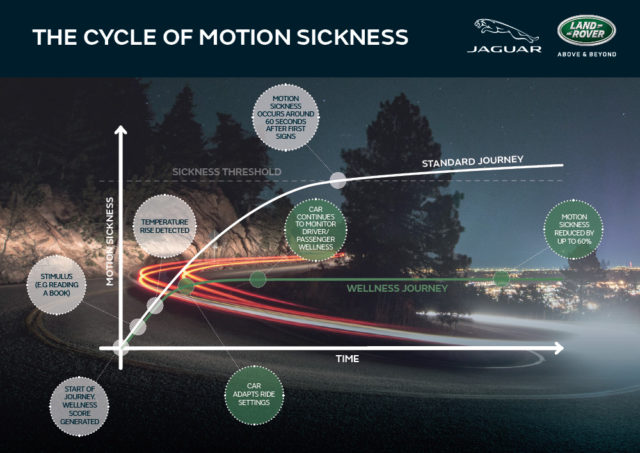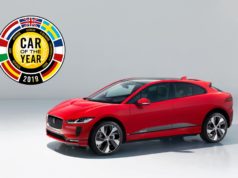Motion sickness affects over 70% of people. Spencer Salter, wellness technology researcher at Jaguar Land Rover, points out that previously “little has been known about the causes and how to mitigate them”.
Now, through its industry-leading motion sickness research, Jaguar Land Rover has created an algorithm that generates a ‘wellness score’ for each passenger
It can automatically personalise a vehicle’s driving and cabin settings to reduce the effects of feeling car sick by up to 60%.

Jaguar Land Rover has already collected 15,000 miles of motion sickness data. The company tested the effects caused by performing a task while in transit, such as checking emails. This has enabled the creation of a baseline driving style for self-driving vehicles to work towards, minimising the need for steering corrections and therefore the risk of motion sickness while passengers work or relax.
Motion sickness often happens when the eyes observe information that is different from what the inner ear, skin or body forces sense – commonly when reading
The ‘wellness score’ calculates how susceptible individual drivers and passengers are to feeling car sick. That happens through using biometric sensors that record physiological signals. The vehicle combines this with motion and dynamics data. Then it will reliably know when a passenger or driver is becoming motion sick – before they do.
“This cutting-edge research has created a solution that, with its solid scientific foundation, can make travelling enjoyable, regardless of your susceptibility to motion sickness. As a parent of young children, who are most susceptible to car sickness, I am particularly excited by the benefits this research can have in making long journeys comfortable and stress-free for families”, said Dr. Steve Iley, chief medical officer at Jaguar Land Rover.

The design of Jaguar or Land Rover vehicles today already helps to combat feelings of nausea. The Jaguar E-PACE, for example, has 26 different seat configurations for passengers. That helps to find a position that raises the infotainment screen relative to eye level. It also turns on the cooling seat function. Researchers proved both factors to significantly reduce the likelihood of motion sickness. The E-PACE’s Adaptive Dynamics also remove low-frequency motion from the road. That motion can lead to nausea. The system is altering the ride settings every 10-milliseconds to ensure passengers always experience high levels of comfort.
The first phase of the research completes this month. The findings are already in use for further projects across research.
With over 15,000 miles of motion sickness data, we design our cars with you in mind. Take a look inside our #LandRover to see what we’ve done. pic.twitter.com/Tcp7zGCdXo
— Jaguar Land Rover (@JLR_News) November 1, 2018
































